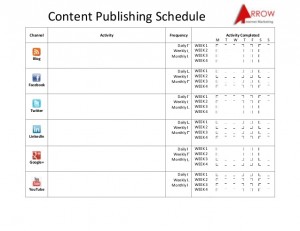“What are you going to do after hitting the “Publish” button?” – That is one of the crucial questions that you are about to face. Indeed, it is! Since we all know that publishing and posting a certain article would definitely not be the end of the process in having a guaranteed SEO, taking a step further can help us reach a particular goal in the marketing industry.

solidgoldcreativity.com
Spending hours on a particular content, and posting it on the web to help other people in giving out information is a rewarding thing to do, especially when you know that your target market engages with it. That is one of the reasons why we continue to make and post one every day. However, rewarding as it may seem, there are instances when we also spend some of our time thinking on what to do next after hitting the “publish” button.
Aside from merely publishing your content, there are 6 simple strategies that you can do to have a successful blog post. Generally, these strategies are all effective when you know what and how to do it.
1. Answer all comments
Most bloggers and marketers, if not all, would not care letting their readers leave a comment. For as long as they have posted something, then they are done. Nope! This is a fallacy.
Bloggers or marketers have to admit! It is not easy to make people leave a comment on your post. However, for some reasons, making your target audience react or engage by leaving comments can make your blog look more authoritative, which also makes it as a social proof. The more good and satisfying comments you get, the more people would also engage to your posts. Also, they can stir an interesting idea for your next content.
Whether you like it or not, you can’t control what kind of reviews they are going to give you. That is why as much as possible, you have to acknowledge and answer their comments in a right and informative way.
2. Schedule your promotions
The promotion of your content plays a big role in creating and having high quality traffic on your post. Without doing so, your content will be stagnant and perhaps, forgotten. Promoting your content constantly is important as publishing your post since it drives new traffic every time you share it socially.
One way you can track the promotions of your content is to make a to-do list or a timeline on what social media platform you will be using on a specific day, week or month. When sharing on Twitter for example, you have to share it more than once in its first day, and a few times throughout the next few weeks.
Moreover, in order for you to drive more traffic, choose a social media platform that can help you gain quality traffic on your post. Twitter, Facebook, Google+, Tumblr and LinkedIn are some of the social platforms that can help you with your promotions.
3. Email the world
Aside from sharing your content in social media platforms, another way to promote your content is through emails. This is one of the reasons why you need to build your email list now. Your followers and subscribers will automatically receive the email that you have sent. Of course, these are the ideal people that will most likely engage in your emails.
Promoting your content through emails is simple, and it works. Basically, you have to include the link that will direct them to your post. You don’t need to include complicated themes or templates every time you use the email. With the right composition of your content, you can definitely drive new traffic in your emails alone.
Moreover, you can also include a call-to-action. You can ask your followers to comment on the new post or share it on their respective social media accounts. In that way, your content will be disseminated all throughout social media.
4. Call in favors
Asking some favors from your followers is also one thing that can add traffic to your post. However, asking them to share your post can may also sound demanding. Sometimes, we feel embarrassed to email them and ask their help when we don’t even know their works.
The problem is, most bloggers or marketers would accept your favor if there is something that you do in return. Let’s take your content for example, if you link their name, brand or a particular quote coming from them, they will also feel obliged to return the favor to you, by sharing or mentioning you and your posts in their content as well.
That is why, it is also important to let them know that you have included or mentioned them on your content. Obviously, not everyone that you have asked will share your post, but many will.
5. Take advantage of groups
An online group is a great place to connect with people, and joining one is a great opportunity to share your content. Basically, joining groups gives you the chance to share any of your contents since there are no restrictions when it comes to post counts. Your reputation in the group is based more on your recent contribution and on how active are you socially.
There are actually a lot of groups that you can join with, but first, you have to make sure to find the best groups to join. You can join in LinkedIn groups and meet hundreds to thousands of professional bloggers and marketers, know who else have the same interest as you do in your Facebook groups, and accumulate followers in your Twitter account.
These are just some of the groups that you can take advantage of. Do not just stay on a particular blog without doing something. Extend your niche by joining groups.
6. Social Media
When we talk about publishing and promoting our content, having it on social media is our first priority. Where else? We usually think of which effective social media platforms are we going to utilize, what kind of strategy are we going to follow to have a successful blog post and gather high quality traffic, and on how to get our target audience’s attention.
Considering these concerns, it will always start and end with social media. That is why, choosing the right social media platform to use is as important as your content. You do not just post it anywhere and let your target market struggle in finding your content. As much as possible, make your content visible to every social media platform. With that, you will definitely gain high quality traffic on your posts.











